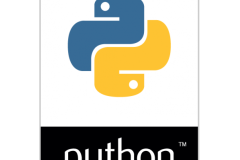This course fits for beginners to Python who has some basic understanding of any one of the programming languages that they are comfortable with.
It covers all the major areas of python programming along with some insights on how to approach any problem/use case in real world with an analytical approach. By the end of the course you will be able to successfully analyse and visualize the data in a python way.
Course Modules
- Overview
- Why do we need Python?
- Program structure of Python
- Environment Setup
- Python Installation
- Execution Types
- What is an interpreter?
- Interpreters vs Compilers
- Using the Python Interpreter
- Interactive Mode
- Running python files
- Working with Python shell
- Multiple programming ways of python
- Basic Concepts
- Types of Operator
- Python Arithmetic Operators
- Python Comparison Operators
- Python Assignment Operators
- Python Bitwise Operators
- Python Logical Operators
- Python Membership Operators (in, not in)
- Python Identity Operators (is, is not)
- Python Operators Precedence
Data Types
- Variables
- Assigning Values to Variables
- Multiple Assignment
- Python Numbers
- Python Strings
- Accessing Values in Strings
- String Special Operators
- String Formatting Operator
- Triple Quotes
- Built-in String Operations
- Python Sequences and Functions
Lists
- Accessing Values in Lists
- Updating Lists
- Delete List Elements
- Basic List Operations
- Indexing, Slicing, and Matrixes
- Built-in List Functions & Methods
Tuples
- Accessing Values in Tuples
- Updating Tuples
- Delete Tuple Elements
- Basic Tuples Operations
- Indexing, Slicing, and Matrixes
- Built-in Tuple Functions
Sets and Dictionaries
- Creating set and Dictionary
- Processing with sets and Dictionary
Loops and Decision Making
- if statements
- ..else statements
- nested if statements
- while loop
- for loop
- nested loops
- Loop Control Statements
- break statement
- continue statement
- pass statement
Functions
- Defining a Function
- Calling a Function
- Pass by reference vs value
- Function Arguments
- Required arguments
- Keyword arguments
- Default arguments
- Variable-length arguments
- The return Statement
- Scope of Variables
- Global vs. Local variables
- Object Oriented Programming
- Basic OOPs Concept
- Creating class in Python
- Documented String
- Private Identifier
- Constructor
- Inheritance
- Polymorphism
- Python Modules and Packages
- Framework vs Packages
- Why are modules used?
- Creating modules
- The import Statement
- The from...import Statement
- The from...import * Statement
- Namespaces and Scoping
- The dir( ) Function
- The globals() and locals() Functions
- The reload() Function
- Packages in Python
- Decorator, Iterator and Generator
- Anonymous Function
- Lambda
- Map
- Filter
- Reduce
- File Manipulation and Database Connection
- Opening Text File
- Working with a File on Python
- The open function
- File modes
- The file object attributes
- close() method
- write() method
- read() method
- Reading files
- Renaming & deleting files
- Writing into a file
- remove() method
- Working around with directories
Database Connection
- Download and Install MySQL Workbench
- Creating the connection string for Mysql with python
- Reading and processing table from python
- Playing around SQL’s from python
- Errors and Exception handling
- Standard exceptions
- Assertions in Python
- The assert Statement
- What is Exception?
- Handling an exception
- The except Clause with No Exceptions
- The except Clause with Multiple Exceptions
- The try-finally Clause
- Argument of an Exception
- Regular Expression
- Powerful Utilities
- Multithreading
- List Comprehensive
- Shallow and Deep Copy
- Pandas,Numpy and Matplotlib
- Importing pandas,numpy and matplotlib libraries
- Creating arrays,series,dataframes
- Processing with dataframes and Series
- Reading csv,xls files using pandas inbuilt-functions
- WorkAround 1 – Processing transaction details from a store
- WorkAround 2 – Detailed Mark analysis using pandas join
- WorkAround 3 – Performing forecast analysis using retail data
Assessments will happen for every week to analyse the understanding of the students on the ongoing topics.
Once all the workarounds and assessments are done, the students will be given five real time projects based on what they have learned in the course.












